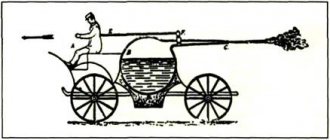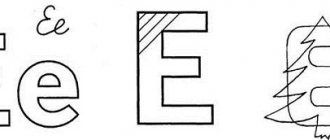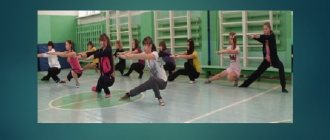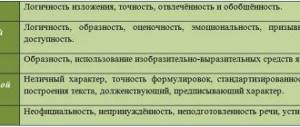lesson in 4th grade “Folk holidays. TRINITY" lesson plan in music (grade 4)
Lesson in 4th grade
Lesson topic: National holidays. Trinity
Activity goal: developing students’ ability to perceive and comprehend new knowledge on a topic and the ability to connect it with previously studied material, structuring an algorithm for the development of musical images of opera
Educational goal: identifying the theoretical foundations for constructing content and methodological lines, active use of TRIZ components and RTV techniques in the development of creative culture in the classroom
Tasks:
Educational – the formation of a personal perception of music, which is based on an emotionally charged attitude towards it through an understanding of its character, content, and means of musical expression;
— acquaintance with the works of the greatest representatives of musical classics;
— familiarization with musical theoretical concepts, terms and phenomena: musical intonations, the meaning of song, dance, marching, the basics of musical notation, musical instruments
Developmental - spiritual development of the individual;
— formation of a personal attitude towards art; — formation of adequate self-esteem regarding creative (primarily musical) abilities and desire to improve oneself;
— developing the ability to independently plan creative actions;
— development of creativity, independence and originality in solving creative problems.
— development of a holistic perception of the world picture;
- development to see the connection between musical phenomena and life;
educational – fostering an understanding of the holistic picture of the world (in particular, the artistic one),
— patriotic worldview, understanding the origins of tolerant relationships in a multicultural world community,
— activation of the ability to think and reflect creatively and productively.
- formation of integrity in ideas about musical culture, its foundations, imagery.
– observation, perception, reflection on phenomena of art, learning and performing musical works,
— acquiring communication skills in dialogue;
- developing the ability to work in a group, team (for example, interaction in singing);
- the ability to apply logical operations (analysis, comparison, synthesis) regarding musical works (analyze and compare them; be able to combine them based on type and genre, group them according to certain characteristics);
Lesson type: combined, fun lesson
Technical support: laptop, sound amplification equipment.
Materials: textbook for 4th grade students of primary school “Music” by E. Kritskaya, story “Trinity” by S. Romanovsky, icon “Trinity” by A. Rublev, pictures with images of Russian folk instruments, an orchestra of Russian folk instruments,
Music Instruments: piano, balalaika, accordion, button accordion
Music Repertoire: Songs “How good it is all around”, music by I. Dunaevsky and lyrics. L. Nekrasova, “Native places”, music. And seq. Yu. Antonova
“Night Musicians”, “Birches of Russia”
“If only they gave me a pipe”
Audio recordings: orchestra of Russian folk instruments, finale of the 4th symphony of P. Tchaikovsky, flash mob “Russian Dance”
During the classes
- Class organization. Musical greeting. Checking those present.
Teacher: The last holiday of the Colored Triodion. The Day of the Most Holy Trinity, followed by the Day of the Holy Spirit. Birthday of the Church. Or, as they used to say in Rus', “birthday land.” All our church holidays are amazing and wonderful. But Trinity is truly something special. It’s like it’s really a birthday party.
The celebration of this great event - the day of the descent of the Holy Spirit - was established by the apostles themselves, we learn about this from the Acts and Epistles of the Apostles. And for two thousand years now, Christians have been celebrating Holy Pentecost, Pentecostia, which unites us into the Holy One Catholic and Apostolic Orthodox Church, which has preserved the teachings of Christ and is led by the Holy Spirit.
Every small Church celebrates this holiday with all the fullness of the great Church
And every small Church also celebrates this holiday with all the fullness of the great Church. The Day of the Church also means the day of the small Church, the day of the union of our small Church with the great Church.
As usual, a few days before the church holiday we begin to prepare for it. If we read at home the Gospel that the Church offers for every day of the year, then we can notice such preparation in church services. After all, these readings one way or another talk about the descent of the Holy Spirit. And if we read the Gospel with the whole family, then we can draw the children’s attention to the words of Christ: I will send you the Comforter (cf. John 15:26), He, the Spirit of Truth, will come (John 16:13).
And two or three days before Trinity, we will tell the children in our own words about what we are preparing for. Actually, of course, we have two holidays ahead of us: the first, on Sunday, is Trinity Day, also known as Pentecost. The second, on Monday, is the Day of the Descent of the Holy Spirit, “Spirit Day.” But these holidays are so close, and even their services are so connected with each other, that we will prepare for both of them at the same time.
Announcing the topic of the lesson. 2 minutes
Open the textbook on page 70 and read the story “Trinity” by S. Romanovsky.
- Feeding new material 10-12 minutes
After all, it was on the day of Pentecost that this mystery was revealed to us - the mystery of the Holy Trinity. This is not an easy topic, of course. But it seems to me that here it is better not to go deep into the search for justifications and depth of dogmatic theology. If we are talking with children, especially small ones, we can simply limit ourselves to simple theses: that God is one, but in three Persons. That all our services, all prayers begin with the invocation of the Most Holy Trinity, with the glorification of Her: “In the name of the Father and the Son and the Holy Spirit.” This is what it is - the Trinity. And, of course, illustrations would be appropriate here. Even, perhaps, just one: the icon of the Trinity of St. Andrei Rublev.
Now take a close look at the “Trinity” icon by A. Rublev. What kind of music do you think by Russian composers is consonant with the figurative structure of A. Rublev’s icon?
Student answers:
And guys, Trinity is a national holiday, it is the magnification of nature. In Rus', since ancient times, it has been celebrated in June. Our birch tree is called the Trinity tree. It is used to decorate the church for all services of Trinity Sunday. People call this week green. The house and church are decorated with birch branches and various herbs; there is a custom of bringing this greenery to the graves of deceased relatives and loved ones.
Since ancient times, houses and churches have been decorated with tree branches and flowers on Pentecost. This custom came to us from the Old Testament Church. This custom is associated with the appearance of the Trinity to the forefather Abraham, because this patriarch received Wanderers under the shade of an oak tree. And green branches are also a sign of spring, spiritual spring, spring of renewal of our lives for the glory of the Holy Trinity, for union with God. Living leaves and flowers - a symbol of life - in honor of the Life of the Giver.
Probably no one can tell you better than Ivan Shmelev how a child can perceive this wonderful custom. First, about how houses were decorated for Trinity:
“The sun is blinding our eyes, someone pulled back the curtain. I close my eyes joyfully: Trinity Day is today! Above my head is a green birch tree, its leaves trembling. Near the ark where the Trinity is, there is also a birch tree, and a small lamp glows in it. The room seems different to me, something alive in it.
... Everyone is dressed up, in light and light dresses. I’m also wearing all white, pique, and everyone shouts to me: don’t turn green! I walk through the rooms. Birch trees are everywhere near the icons. And in the corners of the birch trees, even in the front room, as if not a house, but in a grove. And it smells like a green grove.”
And here's more about the temple:
“The lamps glow in the greenery. The faces of the icons in the birch trees seem alive to me - they look out from the grove. The birch trees look into the windows, as if they want to pray... The singers and winged birds are not visible - somewhere they are singing in the birch trees. Birch trees are also in the altar - leaves hang over the Throne.
...This is not our church: this is completely different, some kind of sacred garden...There, in the birch trees, invisibly, the Lord looks at us, in the Holy Trinity, the mysterious Three Faces, with staffs. And nothing is scary. With us came birch trees, flowers and herbs, and all of us sinners, and the earth itself, which is now alive, and we all bow to Him, and He rests under the birch tree.
...All this here, with me, came with the birch trees: the birch, light air, and the sky that fell, came to the earth, and our land, which is now alive, which is the birthday girl today.”
Both at home and in church - everything is the Trinity.
I suggest you play a little (model “Morphological box-piggy bank-basket”). Let's start with this. Tell me, what do you know about national holidays?
Student answers:
That's right. Let's divide into 3 groups.
1.Folk holidays
2. Folk songs and music
3. Folk games
At sunset, according to an ancient folk custom, the birch tree is developed and stripped, leaving only a scarlet ribbon on it. Birch branches, followed by wreaths of fragrant herbs and flowers, are thrown into the water. In some Russian provinces, on Trinity, just like on Easter, eggs were painted - but not red, but green. This was done using the same birch leaves. We paint the eggs with store-bought green paint.
So that the traditions of our people do not turn out to be more important than the faith of our people, so that the external does not replace the internal, we will not just not forget about the church celebration of the Day of the Holy Trinity - we will first of all celebrate this day in the temple, together with the Church. And then everything will take its rightful place: the main thing will be the worship and teaching of the Church, the customs of the Orthodox Church will be in second place, and when this is possible, then our folk traditions will be in third place, in cases where they do not contradict the primary positions.
And in what mood do they sing the Russian folk song “There was a birch tree in the field?”
I suggest you join the round dance and perform it yourself.
Folk song, as a source of living water, gave composers inspiration and taught them beauty and skill. You already know that simple song melodies in the works of composers often turned into richly decorated orchestral melodies.
- Consolidation of the topic, material
Take your seats. And we will continue, maybe some of you will remember in which symphonic work by P. Tchaikovsky the melody of this song sounded? Where did the Trinity song “A birch tree stood in the field” receive its rebirth? And how did the composer “draw” the national holiday in it?
Student answers:
Let's collect a basket of ideas. I ask you to name facts, names, names of songs, holidays, possibly dates, concepts, musical terms related to the topic of the lesson.
Student answers:
This is your harvest of knowledge, so we learned that...
I suggest continuing the lesson with creative work. On page 69 is the text of the folk song “Curly Birch”, I ask you to compose a melody for it.
How do you understand the popular proverb “When spring and Trinity pass, all the fun will disappear.” Explain its meaning.
Student answers:
For many centuries, people have composed songs as a chronicle of their lives. They contain joys and sorrows, successes and difficulties, rituals and games, memories of the past, dreams of the future. For a poet, composer and artist, like for each of us, there can be no nature without man, just as there can be no man without nature. Creator and Creator - God the Father, Savior - God the Son and Comforter - God the Holy Spirit - Trinity Consubstantial and Indivisible. She created and arranged this world, its beauty and eternity.
Guys, let's play "Yes-no"
Let's summarize. Now, in a chain, I ask you to name the WORD-SENTENCE-QUESTION-ANSWER in accordance with the topic of the lesson. We start with Varvara Guseva. (Trinity - Church and folk holiday - folk symbol of the holiday - birch, etc.)
- Analysis and evaluation of the lesson
- Assessing student work
Veneration of the Holy Trinity. This, of course, includes dogmatic theology and a lot of lofty things. But, in particular, this applies to our lives. Our relationships with each other. After all, to worship the Holy Trinity means to strive for that mysterious unity, for that love, the image of which the Persons of the Holy Trinity show us. In particular, Hieromartyr Hilarion (Troitsky) wrote a lot about the similarity of church humanity to the unity of the Persons of the Holy Trinity, for example, in his work “The Trinity of the Divine and the Unity of Humanity.” In this text, the saint reminds us of the words of Saint Cyprian of Carthage: “God commands that only peaceful, concordant and unanimous people should live in His house.” Let them be one, as We are one (John 17:22). We will remember this more than once if we really are going to celebrate the day of the Holy Trinity.
This is what our Church, the same one who celebrates her birthday today, teaches us all again and again, at every liturgy:
“Let us love one another, that we may confess with one mind
Father and Son and Holy Spirit, Trinity Consubstantial and Indivisible."
- Homework (optional)
This concludes our lesson. Very soon we will meet again in the musical theater. Best wishes. Goodbye, guys!



